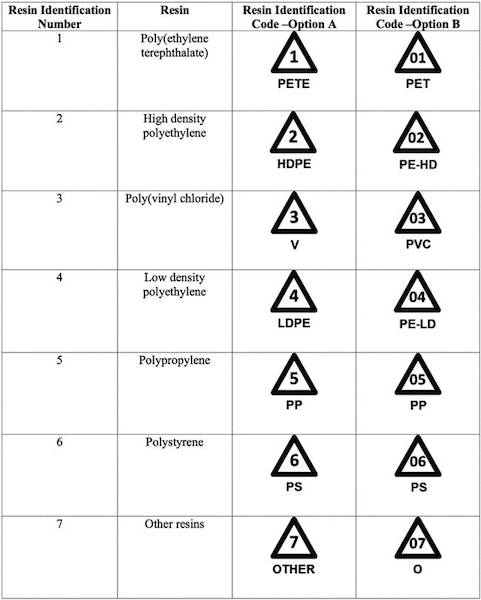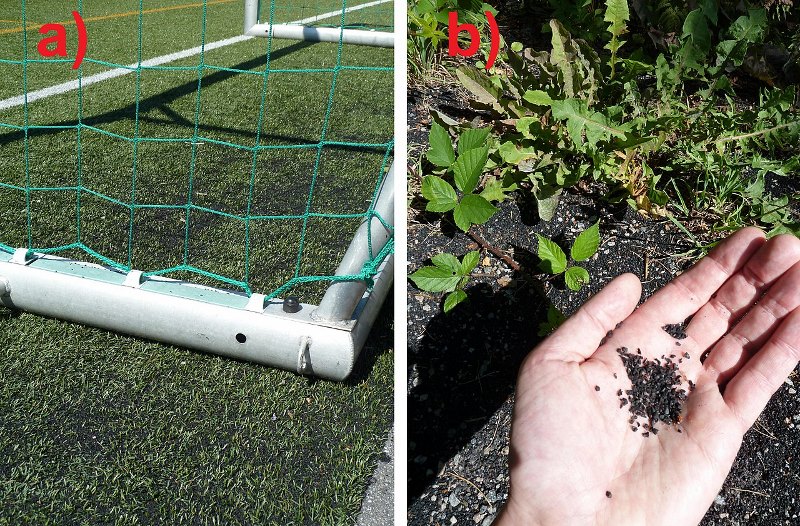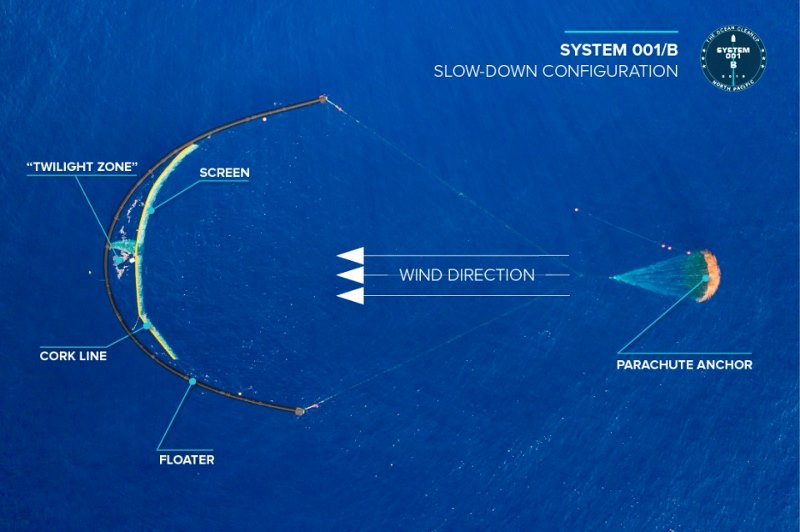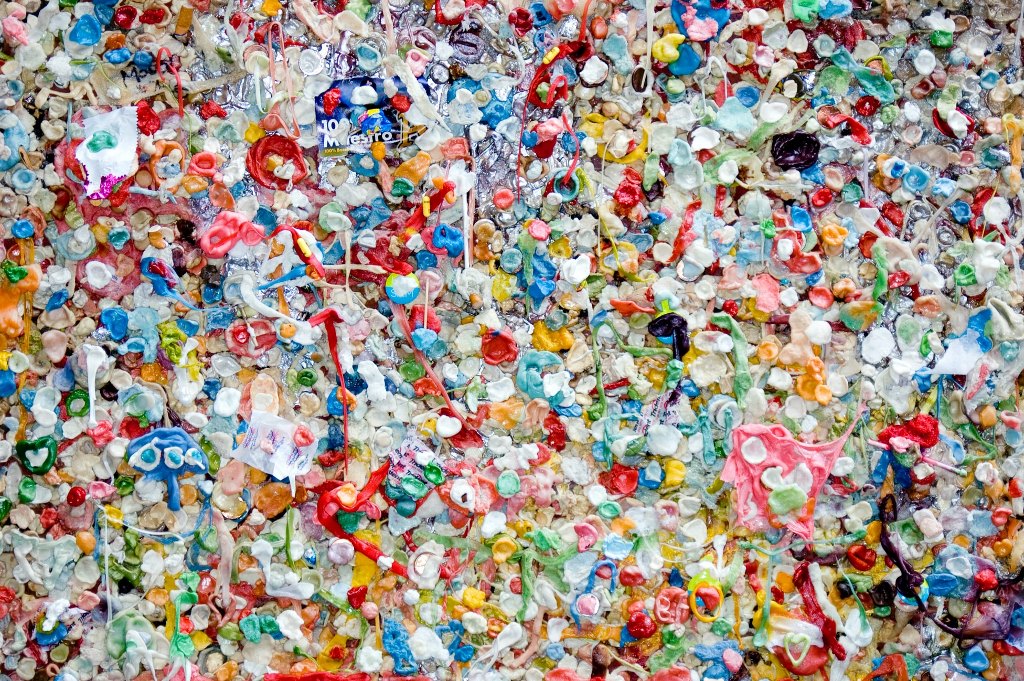For something as omnipresent as plastic, it seems a strange question to ask whether it can cause cancer. It mean, it’s everywhere. The keyboard I’m using to write this is plastic. The device you’re using to read this contains plastic. Even some of the clothes I’m wearing have a plastic element; polyester, like nylon, is a form of plastic. But, time and circumstance are ever-changing beasts, so is it possible that plastic can now cause cancer?
Well, plastic has been with us for over 100 years. It started back in 1907 with the development of Bakelite. I’m sure it came in a wide variety of colours, but I mainly remember it being dark brown or black. It was often used to make the cases of phones, radios and televisions. I also remember Bakelite light switches… In fact, due to the associated lack of electrical conductivity, Bakelite was used on a lot of electrical devices. This led to another development, which I will circle back to at the end.
But, as we all know, the evolution of plastic did not end with Bakelite. Otherwise wearing plastic-based clothes would be a very different experience!
Some of the more common forms of plastic, as we know them today, were discovered, or developed, as follows:
- PVC (Polyvinyl chloride), in the 1920s
- Polystyrene, in the 1930s
- Polyethylene, in 1933
- Nylon, in the late 1930s
- Polyethylene terephthalate (PET), in 1941 (this includes polyester)
- Polypropylene, in 1957
As a result of all these types and varieties, plastics have been used to replace traditional materials like:
- Wood
- Stone
- Horn
- Bone
- Leather
- Metal
- Glass
- Ceramic
- Cotton

By Holger.Ellgaard 08:21, 15 October 2007 (UTC) – egen bild, CC BY-SA 3.0, https://commons.wikimedia.org/w/index.php?curid=2918715
As such, it should come as no surprise that:
Worldwide, about 50 kg of plastic is produced annually per person, with production doubling every ten years.
https://en.wikipedia.org/wiki/Plastic
And, in terms of what this plastic is used for:
- A third goes on packaging
- A third goes into buildings
- The remaining third goes into, well, everything else…
This proportion, however, differs from place to place. In India, for example, more than 40% of plastic goes into packaging. The use of plastic changes all the time… but always in increasing amounts.
Given that so much plastic has been with us, for so long, it would seem obvious that plastic cannot cause cancer. If it did, there would be an obvious causal effect between the amount of plastic used and an increasing incidence of cancer. Such a causal link does not exist.
Don’t get me wrong, both the use of plastic and the number of cancer cases are increasing, but correlation isn’t causation…
Lots of things are on the increase:
- Access to advanced medical treatment
- Average height in humans
- Total population of humans
- Average human lifespan
- The concentration of CO2 in the atmosphere
Any of these five could be as attributable to the rise of incidence in human cancer rates as plastic could…
In fact, one of them actually is: the increase in human lifespan!
The older a person gets, the more likely they are to develop cancer. But that’s not the point. The point is: you can’t assume that plastic can cause cancer, just because more people are developing cancer, at the same time that plastic usage is increasing.
It’s faulty logic like that which gets communications towers burned down! You know, the logic that goes: because Coronavirus is spreading at the same time that 5G coverage is spreading…

By Alex E. Proimos – https://www.flickr.com/photos/proimos/4199675334/, CC BY 2.0, https://commons.wikimedia.org/w/index.php?curid=22535544
Say it with me: “Correlation is not causation!”
…
Anyway…
What has changed with plastic is the way we use it and the way we dispose of it. And this has led to a number of legitimate concerns about the possibility that plastic can cause cancer. There are three primary concerns:
- Microwaving plastic
- Reusing plastic products
- Microplastics
Cancers are formed when damage is inflicted on the DNA of cells. This damage can be caused by a variety of agents, one of which is chemicals. And, as plastic is made of chemicals, it seems entirely plausible that, under certain circumstances, plastic might be able to ‘leak’ these chemicals in such a way that people are exposed to them. In which case, and if these chemicals are able to damage cellular DNA, then plastic might to able to cause cancer.
So I’ll look at each of these concerns, in turn.
Firstly, though, let’s establish where plastic comes from, in the first place…
Plastics come from petrochemicals. Specifically, from the fossil fuel, petroleum. That’s right, plastics started life, hundreds of millions of years ago, as something akin to plankton, bobbing around in an ocean. These critters died and sank to the bottom of the ocean where they formed a deep layer. This layer of dead organic material was, over time, covered by sand or silt, which eventually, itself, became compressed to form rock. The mass of plankton was then heated and crushed, over eons, to become the petroleum we know today.
Once this petroleum is refined and separated it is used in a vast variety of ways. Including the manufacture of plastics. It’s incredible to think about, really. Not that anyone seems to do so. It seems, for the most part, that plastic is just taken for granted, without any thought as to where it came from. Mind you, the same is true for so many things…
But, as ever, I digress.
Essentially, plastics are refined petrochemicals. They’ve got a lot of chemicals in them, can these chemicals get back out again?
Microwaving
With regard to microwaving plastic, the rumours that this is dangerous to your health have been around for a long time. On the one hand, this is good. It means that said rumours have had enough time to be tested and researched. On the other hand, it’s bad. It means that people have had enough time to become entrenched in their opinions. Sufficiently entrenched that no amount of research is going to change their mind…
That said, it has been clearly demonstrated that microwaving plastic containers can cause chemicals to leach into the food contained within.
Of the chemicals that can migrate into your food, there are two that raise the most alarm:
■ Bisphenol-A (BPA), added to make clear, hard plastic
■ Phthalates, added to make plastic soft and flexible
https://www.health.harvard.edu/healthy-eating/microwaving-food-in-plastic-dangerous-or-not
These are both examples of Xenoestrogens, meaning they can mimic the effects of oestrogen on the human body. As there is a known link between synthetic oestrogen and breast cancer, there seems to be a chance that these chemicals leaching from plastics, when microwaved, can cause cancer. Breast cancer charities, in particular, are focused on this. Particularly in regards to BPA.
The reality is, though, that while BPA can migrate from plastic into food, when microwaved, the levels are incredibly low. The studies cited by people arguing against BPA, which show carcinogenic tendencies in mice, involve consumption two or three orders of magnitude more than humans are likely to experience. And, even if the BPA levels were high enough to impact on human physiology, there is no evidence that BPA is carcinogenic in humans. There is, however, also no evidence that BPA is not carcinogenic either…
This is why the International Agency for Research on Cancer (IARC) has BPA listed as a Group 3 Agent. BPA is not classifiable as to its carcinogenicity to humans. And it is perhaps for this reason that a number of places, including the European Union, has banned BPA from use in plastic bottles for babies. It is also banned under Proposition 65 in California… But, as I mentioned in my post about whether coffee can cause cancer, coffee was also briefly banned under Proposition 65.
My personal thought is that food contaminated by BPA, from microwaved plastic, cannot cause cancer. Even if the xenoestrogen effects of BPA could definitely lead to cancer, which has not been established, the levels of contamination are simply too low to have an effect.
But all of these BPA fears are largely irrelevant anyway. BPA is not allowed in any form of plastic labelled, ‘microwave safe’. If in doubt, all plastics have an identification code:

Wikipedia will tell you that codes 1, 2, 4, 5 and 6 are very unlikely to contain BPA. Even articles that are taking an anti-BPA stance, like this one from Hunker, are grudgingly forced to concede that codes 1, 2, 4 and 5 are microwave safe.
Like I say, I don’t think there was ever a time when microwaving plastic could cause cancer. Even so, it can’t hurt to take the following steps:
- Only use plastics that are microwave safe
- Make sure you don’t overcook and/or burn the food you microwave
- Replace plastic containers when they start to deteriorate
Follow those simple steps and there’s no way that microwaving plastic can cause cancer.
Reusing Plastic Products
There was was a lot of fuss, a while back, about the dangers of leaving plastic water bottles in your car during summer. Apparently, the repeated heating and cooling of the plastic could cause it to leach chemicals into the water. The chemical in question? You guessed it: BPA!
As I’ve already covered this, I’ll only make a couple of references. Firstly one from the BBC:
BPA has been used in packaging for years and it’s estimated that it can be detected in the urine of most adults in the developed world.
However, it is possible to reduce your exposure by avoiding BPA in plastic packaging. Most plastics are labelled with a number which allows you to work out whether it contains BPA. The number is inside the triangular recycling mark… 1, 2, 4 or 5 means the plastic is BPA free. They quite often say BPA free on them.
https://www.bbc.co.uk/programmes/articles/3JYPnFyHfjDB0jTJFSw97ms/can-plastic-water-bottles-cause-cancer
So, again, it’s entirely possible to avoid BPA when you’re choosing a plastic product to purchase.
A lot of this topic, of reusing plastics, is related to bottled water. Quite why anyone who lives in a country with potable tap water would decide to buy bottled water is beyond me. Are you worried that there isn’t enough plastic waste floating around already? If you’re worried about potential contaminants in tap water, you’re going to love the next section…
And if you’re reusing single use water bottles, then you might want to reconsider that as well. Not because reusing plastic products can cause cancer, because that’s not the case. But, as you’ll see in a minute, there are other considerations…
Before that, though, and as the final word on this subject, I’ll turn to Cancer Research UK:
There is no good evidence that people can get cancer from using plastics. So, doing things like drinking from plastic bottles or using plastic containers and food bags won’t increase your risk of cancer. Some people think that chemicals that can be found in plastics, like bisphenol A (BPA) can get into our food or drink and then cause cancer. Even though some studies have found certain chemicals in plastics can end up in things we may eat and drink, the levels are low, and within a range considered safe to humans. This is even in experiments when plastics are heated for hours at a time.
https://www.cancerresearchuk.org/about-cancer/causes-of-cancer/cancer-controversies/does-using-plastic-bottles-and-containers-cause-cancer
So, the reason you might not want to reuse your plastic bottles, is that doing so can be a breeding ground for bacteria:
One study, published in the Canadian Journal of Public Health, took 76 samples of water bottles used by school students. Nearly two-thirds of the samples had bacterial levels that exceeded that of drinking water guidelines, which may have been the result of “the effect of bacterial regrowth in bottles that have remained at room temperature for an extended period”.
https://www.thesun.co.uk/living/1466504/this-is-why-you-should-never-refill-your-plastic-water-bottle-even-if-you-wash-it/
In reality, the risk from this level of bacterial growth is very small. It’s just a bit icky! Either way, you can be sure that reusing plastic containers cannot cause cancer.
Microplastics

By Soleincitta – Own work, CC BY-SA 4.0, https://commons.wikimedia.org/w/index.php?curid=61176180
Okay, so going back to the point that plastics are made from materials refined from petrochemicals. This means that, while organic, plastics are also synthetic. They are not of nature. And, because of this, there is nothing in nature than can ‘eat’ plastic. And, sure, plastic has been around for over 100 years, but that’s a long way short of the time needed for something to naturally evolve to digest plastic.
After the evolution of wood, do you know how long it took for something to evolve that could ‘eat’ said wood? 60 million years! Which is why we have coal, as opposed to otherwise. As soon as something evolved that could digest fallen trees, there were no more coal deposits.
Which definitely means that, in a couple of 100 million years, or so, if a species digs deep enough, it’ll find a layer of plastic…
Because plastic can’t biodegrade. There’s nothing biological that can process it or eat it.
Sure, the sun can degrade it, but all that happens here is that the plastic breaks down into smaller and smaller pieces. But these pieces don’t go anywhere, they just drift around as microplastics. If you think about it, every bit of plastic that has ever been made is still out there somewhere. It’s either:
- Been recycled into another bit of plastic
- Been buried in a land fill
- Escaped into the world as garbage
None of it has gone anywhere!
And, at the same time, it is everywhere!
Going back to the issue of bottled water, I refer you to Time Magazine:
[Of] the 11 bottled water brands tested […] are among the most popular and widely available in the U.S. and around the world. Samples from the brands tested varied in plastic concentrations, and the average across brands was 325 microplastic particles per liter of bottled water, researchers found. Nestlé Pure Life had the largest average concentration of plastic particles out of all the brands tested; one sample from the brand was found to contain more than 10,000 microplastic particles per liter.https://time.com/5581326/plastic-particles-in-bottled-water/
Mmmmmmm, plasticy goodness!
Seriously: stop drinking bottled water, if you don’t need to.

Photo by tanvi sharma on Unsplash
The only good thing about any of this is that plastic is inert. It doesn’t seem to do any damage to humans, if consumed in small amounts. If, however, it is consumed in large amounts by bird and marine life, plastic is fatal. Not from cancer, of course, but from starvation. When your digestive tract is full of plastic, which you can’t pass, death is inevitable.
I won’t be showing any distressing images of the impact that plastic has on wildlife. If you’re reading this post, it’s likely that cancer is looming large in your life, so you’ve already got enough on your plate without those sort of images…
I will however, cite the following, which is horrifying enough:
“Every time and everywhere we look for plastics in a scientific context, we find them,” says Phoebe Stapleton, an assistant professor of pharmacology and toxicology at Rutgers University.
https://time.com/5581326/plastic-particles-in-bottled-water/
Some of these microplastics are now sufficiently small that they can pass through cell membranes into the cells of animal tissue. Humans, of course, are a type of animal. In rats, microplastics have been shown to cross the placental barrier. This means that baby rats are being born with microplastics inside them…
There is even some evidence emerging of the rate of cancer cases increasing in step with the rate of proliferation of microplastics. As yet, there is no causal relationship. So, as it stands, microplastics aren’t known to cause cancer. But more research is being done…
And we’d all better hope that microplastics don’t cause cancer, otherwise life as we know it is going to become very different indeed!
Because the amount of microplastics in the environment, at the moment, is merely a ripple compared with the potential tsunami that is still to come.
Have you heard of the Great Pacific Garbage Patch?
This is a collection of plastic waste circulating in the North Pacific Gyre. The garbage patch contains nearly two trillion pieces of rubbish (that’s trillion, with a ‘Tr’!), totaling some 87,000 tones of plastic. All of which is slowly breaking down into microplastics, under the effects of the sea water and the sun. The question is, where will it all end up, when it becomes microplastics.
Oh, and the Great Pacific isn’t the only of these Garbage Patches. Not by a long way…
Thankfully, an effort is being made to tackle this problem… by a Dutch teenager called Boyan Slat.
Well, he was a teenager in 2013, when he started The Ocean Cleanup, he’s 25 now.

https://theoceancleanup.com/updates/into-the-twilight-zone/
He’s also one of my personal heroes.
If you’re in any way concerned by this microplastic problem, please do visit the Ocean Cleanup site. You can make a donation or purchase a product made from the plastic that he’s already cleaned out of the oceans. This guy, and his team, is doing what the Governments of the world are not. He’s tackling the problem of plastic waste pollution.
And, if he’s allowed to, he’ll collect a lot of this plastic before it becomes microplastic. And that’s good for all of us.
Because the obvious alternative, that of developing a strain of bacteria that can biodegrade plastic, is a different type of disaster waiting to happen. Just imagine what would happen if a plastic-eating bacteria was released into the world… Think of all the essential parts of your life that contain plastic, and then think about them being dissolved away by bacteria. There’s a novel in there somewhere…
Sadly, there are no easy answers to the problem of microplastics.
The only good news, as it stands, is that microplastics can’t cause cancer.
So, is there any type of plastic that can cause cancer?
Well, yes, as it happens. Bakelite!
Not because of the Bakelite itself, which is fine. But some Bakelite products had asbestos added to the mix, to help the molded shapes hold their form. This means that, in theory, if you damage a Bakelite product enough, the asbestos fibres could become airborne. If they do so in a sufficient concentration, and you breath them in, you could potentially develop lung cancer or mesothelioma.
In practice, however, the amount of asbestos used in Bakelite was very low. It was also tightly bound within the plastic, making it very difficult to become airborne. So, not even asbestos-containing Bakelite can realistically give you cancer.
So, there you have it, despite a near miss with BPA, plastic cannot cause cancer. This might be subject to change as we learn more about the impact of microplastics but, as it stands, we’re safe. And if you want to do something to help ensure that microplastics are never given the opportunity to cause cancer on a massive scale, there’s still time to act.

1 thought on “Can Plastic Cause Cancer?”
Phew, that must have taken some time to write. Found it quite interesting, so thanks. I actually watched something on Netflix and after that quit using plastic water bottles forever. So frightening what is happening to our oceans when people don’t recycle and then our air, as plastics are recycled. Hope you are doing well.